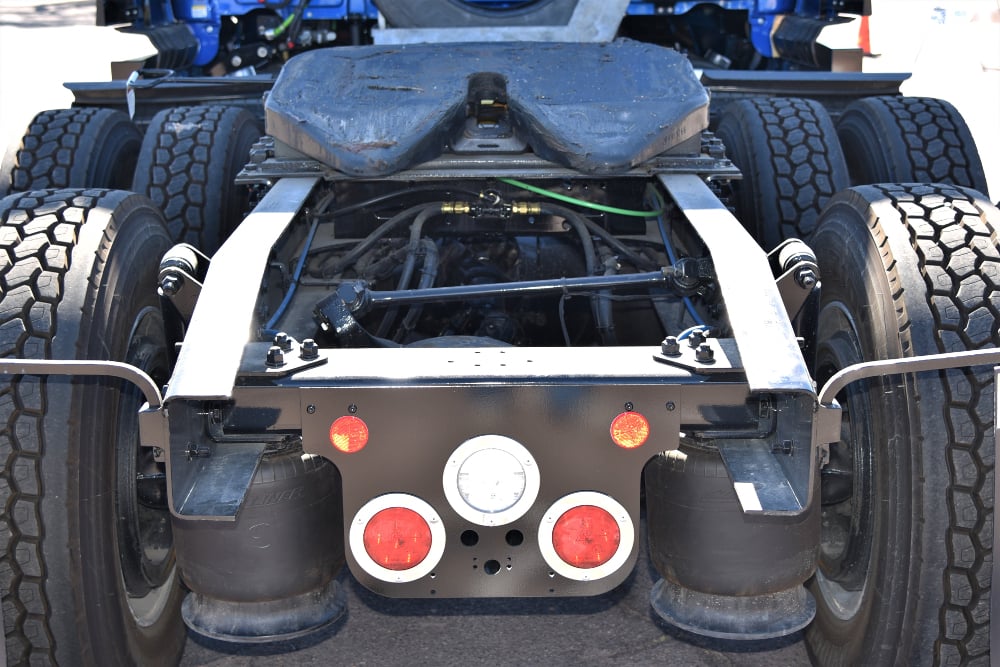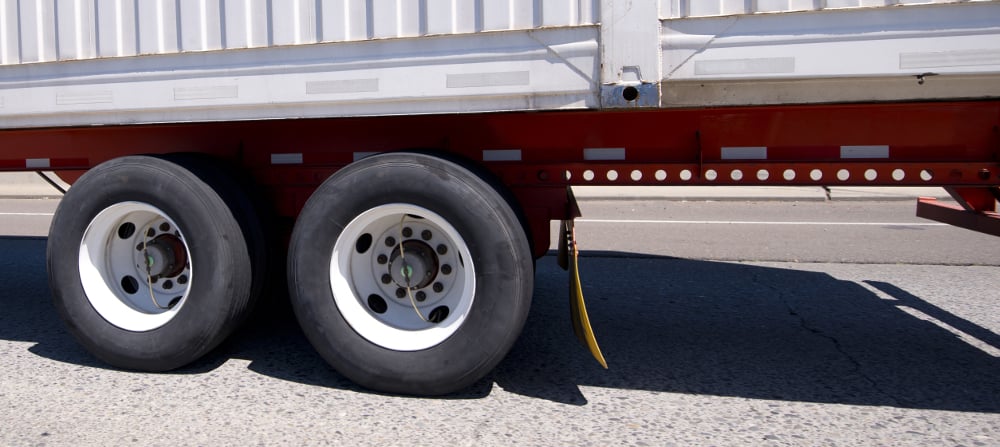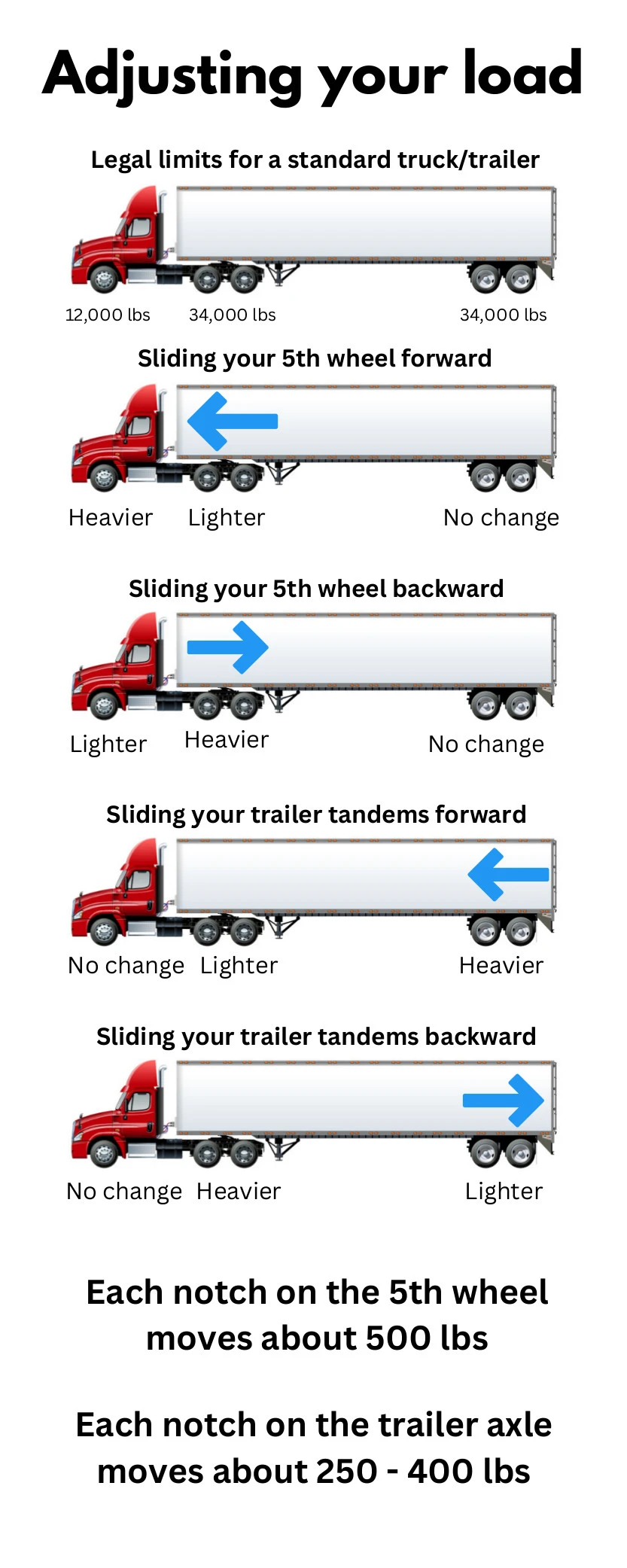Getting a truck properly loaded and balanced is almost a science in the trucking industry. There are a lot of tools that help drivers understand how much they are hauling and how to adjust the truck and trailer to fit inside the required weight restrictions for gross and axle weights.
Having an overloaded truck can cost carriers in multiple ways. It puts drivers at a higher risk of fines and violations, can impact CSA scores, increases wear-and-tear on the equipment (which increases your trucks cost per mile), burn more fuel and cost a lot of driving hours to fix loads.
Knowing how to figure out how much you are hauling and how to use the tools on your truck and trailer to shift loads can help save a lot of down time and make your time more profitable.
How much weight is allowed on each axle?
To know how to go about adjusting your loads it is important to know how much weight is allowed on each axle. By knowing how much is allowed on each axle group you will have a direction to work towards in order to get you axle weights legal.
- Steer axle weight - The legal maximum weight for a steer axle is 12,000 lbs.
- Drive axle weight - The drive axle group can only have a max weight of 34,000 lbs total or 17,000 lbs per axle.
- Trailer axle weight - The trailer axle group can also only have a max weight of 34,000 lbs total or 17,000 lbs per axle
- Gross weight - The total weight of the truck and trailer cannot exceed 80,000 lbs without additional axles and permits.
If the truck and trailer is over the 80,000 lb gross limit then shifting your 5th wheel or trailer axles will not fix this problem. Your gross weight will always be the same when trying to adjust axles and loads. If this is your case you will need to go back to the shipper and get some of the load removed to become legal again or apply for an overweight permit for the states you plan to cross.
Being over gross limits can get you fined or placed out-of-service if you cross a weigh station ran by the DOT.
Now that you know what the limits are allowed on each axle you can figure out what you need to adjust on the truck or trailer in order shift the load more to the steer, drive or trailer axles to get inside the legal limits.
How can you get the weight of a truck and trailer?
Before you can accurately adjust your loads you need to know much you are hauling on each axle. There are a couple of ways that you can scale trucks. The effectiveness of these methods depends on how your company operates and how involved drivers need to be to get their axle weights
Many trucks and trailers are equipped with a pressure gauge on their air suspension. Knowing how to read truck weights using a pressure gauge on air suspensions is a great way to figure out if a trucks drive axle or trailer axle is overloaded. This requires drivers to know what the maximum pressure is allowed on the axle before it is overloaded.
For example 61 psi may equal 34,000 pounds for a trailer axle. If the pressure gauge is ever over 61 psi then the axle is over loaded and the load should be adjusted to get the pressure below this max limit.
For carriers with multiple trucks, trailers and drivers who do drop-and-hook applications this may be difficult because every truck and trailer can be slightly different and requires all drivers to be aware of all of the max pressures for every piece of equipment.
This method is best for owner-operators who use their own truck and use the same trailer every day.
For bigger carriers and fleets using on-board truck scales or having drivers scale loads is the easiest way to get an idea on how much is on each axle.
Adjusting truck loads by sliding the 5th wheel

If your drive axle is over the required 34,000 lbs but you are under the 12,000 lbs requirement for the steer axle, one way you can fix this is to shift your 5th wheel. By moving your 5th wheel forward you are shifting some of the load off of the drive axle onto the steer axle.
The general rule of thumb is that each hole on the 5th wheel shifts about 500 lbs to the other axle. This will vary across different makes and models of trucks so figuring out your specific settings is best.
By moving the 5th wheel toward the front of the truck you can estimate about 500 lbs getting added to the steer axle and 500 lbs getting removed from the drive axle. When you move the 5th wheel back towards the trailer you will be taking about 500 lbs off of the steer axle and adding it on to the drive axle.
Adjusting truck loads by sliding the trailer tandems

If you notice that either your drive axle or your trailer axle is overloaded then you can shift loads using your trailer tandems. Sliding trailer tandems is the more popular way of adjusting loads.
If the trailer axle is over the required 34,000 lb weight limit you can shift some of the load on to the drive axle by moving the tandems back towards the back of the trailer.
If the drive axle is over its 34,000 lb limit then you can move some of the weight off of the drive axle by sliding the trailer tandems up closer to the drive axle. This will put more of the load on to the trailer axle.
To slide the trailer tandems find a flat surface, set the trailer brake and pull out the king pin that locks the trailer axle in place. If you need to move the tandems toward the front and closer to the drive axle just put the truck in reverse and move to the desired pin location. If you need to move the trailer tandem to the back of the trailer then put the truck into drive.
Depending on the type of trailer you are using each hole on the trailer frame typically adjust 250 lbs on 4 inch spacing or 400 lbs for a 6 inch spacing. So for each hole you move the trailer axle you are moving weight between the drive axle and the trailer axle.
If you reach the point that you can no longer move the axle or 5th wheel any further but you are still overloaded then you will need to go back to the shipper to get the load adjusted manually.


